New Zealand. Part IIMap
March “Oh hey, is it true that New Zealand is full of natural beauty, with mountains and geysers everywhere?” 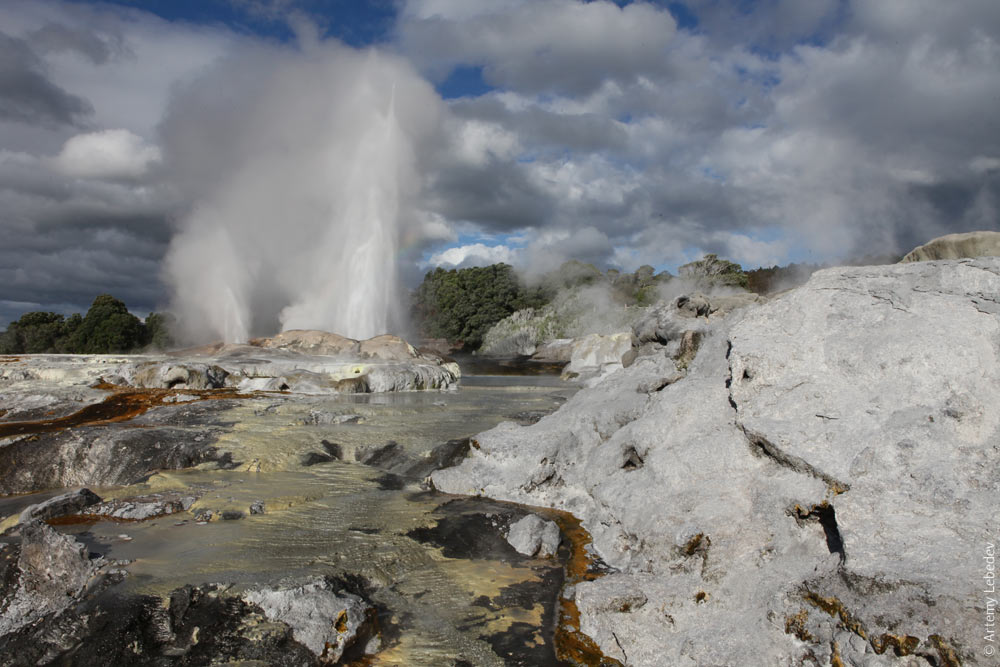 “Yes. Now let’s continue studying the interesting stuff.” HamiltonMapEven the trash cans have fern leaves on them. 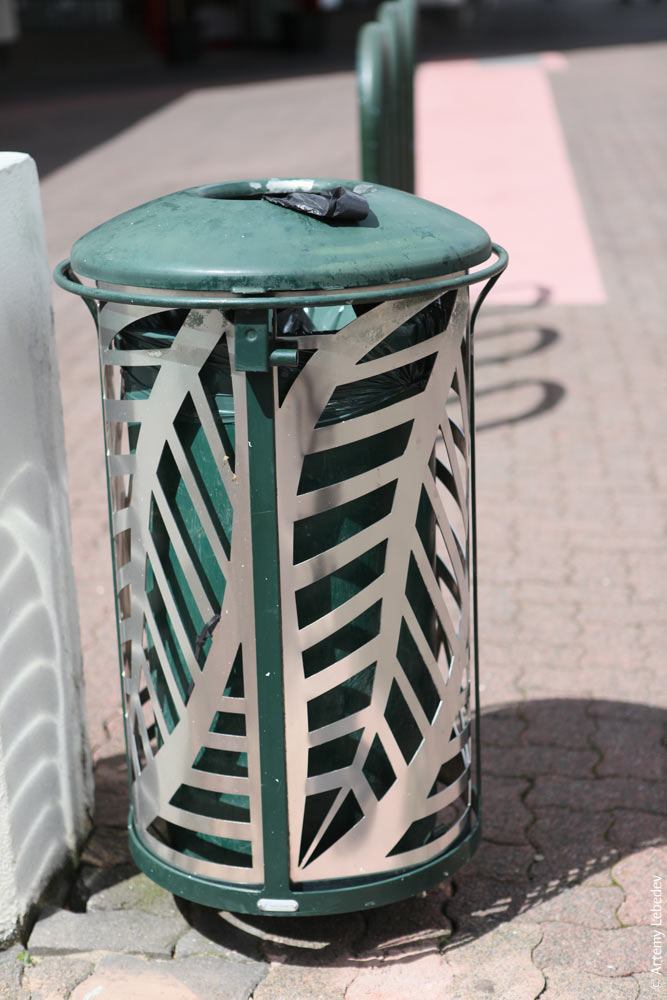 A more modern post box model.  The signs marking the beginning of a divider are exactly like the ones in Russia. I have yet to see a version of this sign that’s better than the one in the United States. Australia’s also consists of an arrow (although not quite as European as this one) with the words “keep left.” 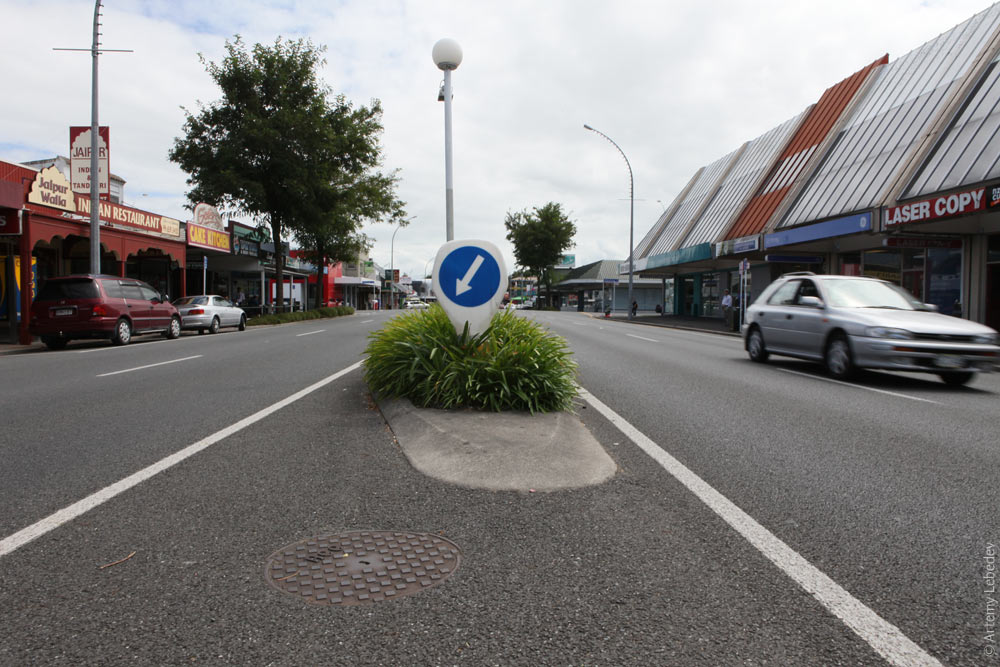 They haven’t invented road stencils here yet—all the lettering on the pavement is composed of straight lines. Curiously, the letters are elongated, which would make sense if they were facing traffic (then they would appear normal from the driver’s vantage point). But the words run parallel to the traffic, making them twice as illegible. 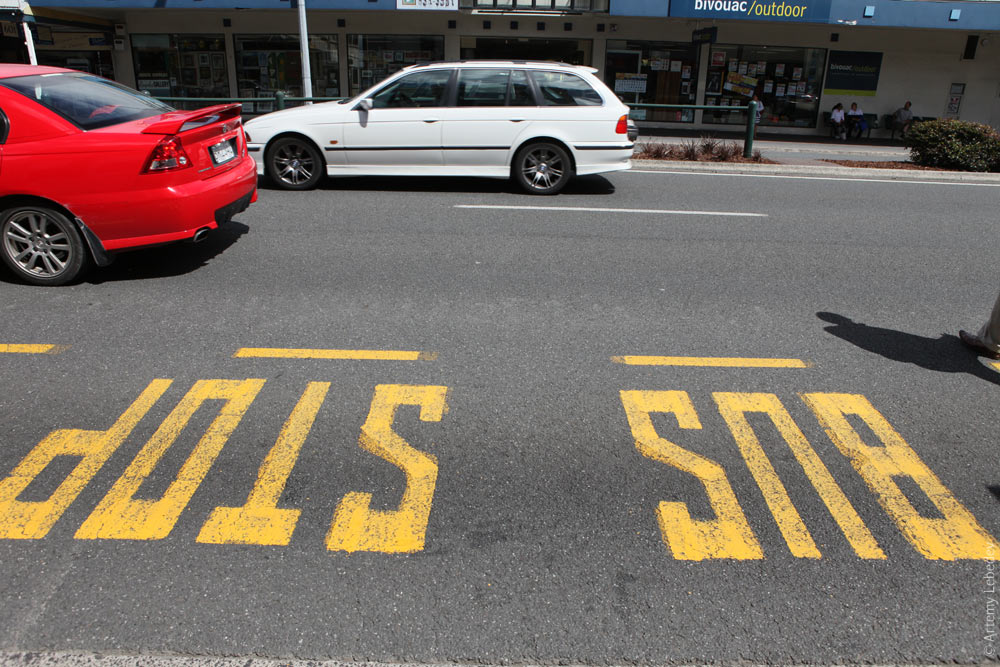 There’s absolutely nothing to do in Hamilton. Time to move on. An old post box model. This is a small one, for moderate volumes of mail. 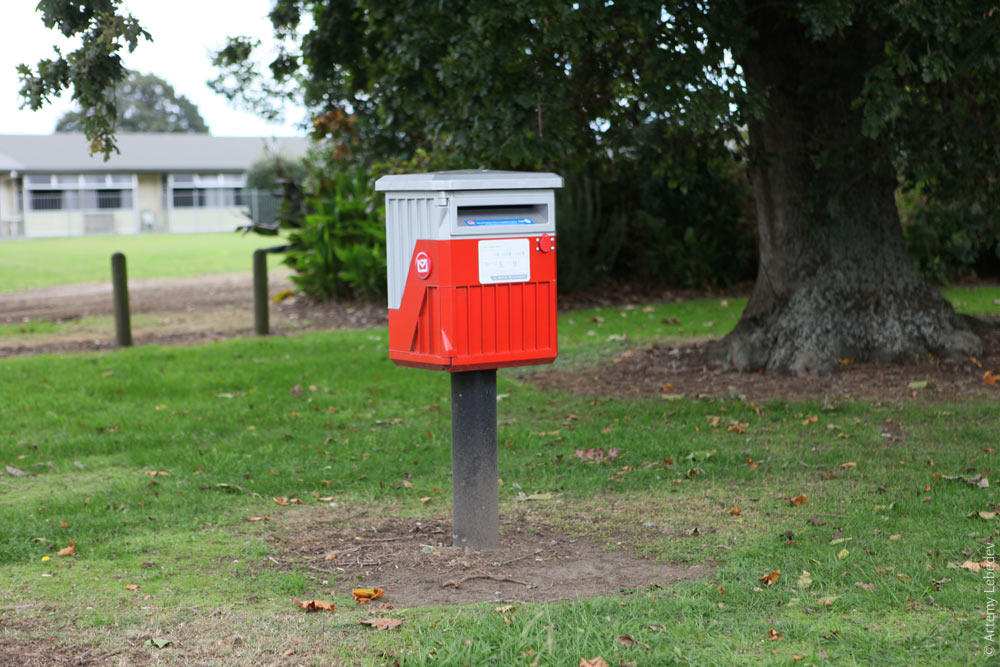 Lawful disposal of glass recyclables in special containers. This cuts down on the use of plastic bags, which only contribute to further pollution.  Entrance points into all cities and towns are decorated with steles bearing the city’s name and the logos of all the lodges and sects that can be found there. What differentiates them from the ones in Australia and Brazil is that these have a plaque under every logo indicating when and in which pub the regular meetings of that society take place.  Following the example of their Australian older brothers, signs along the road urge you to pull over and nap, but there are very few rest areas—which makes sense, since there aren’t any long monotonous and deserted stretches of highway here. 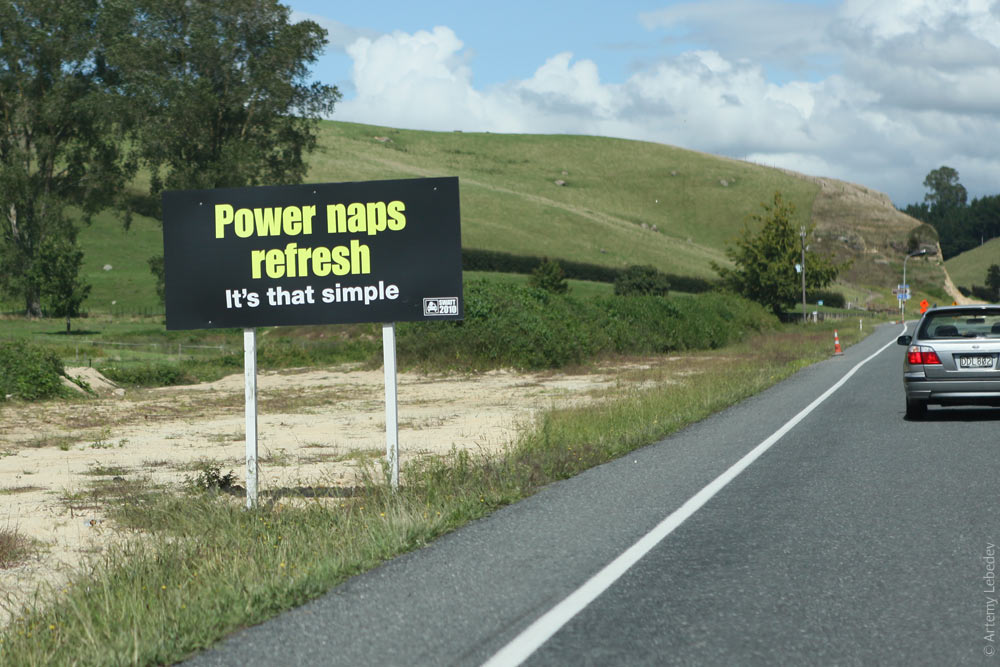 The coffee is lousy everywhere in New Zealand (as opposed to Australia, where it’s amazing everywhere). The butter is always salted, even when it’s served with sweet rolls (like in Greenland. Outstanding kitsch.  Traffic signs indicate the recommended speed for entering each specific sharp turn.  Drivers are warned about the beginning of a work zone well in advance, one or more kilometers beforehand. People with signs are positioned in front of segments where the road narrows down to a single reversible lane.  Work zones are marked with striped cones along their entire length. 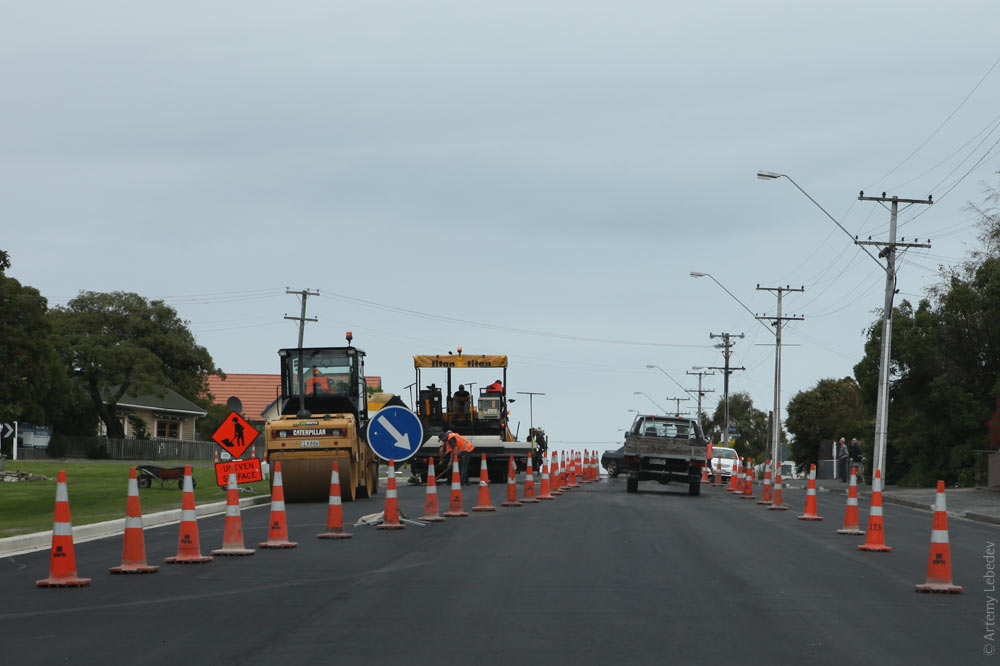 A school bus stop sign and a speed bump sign. Followed by utility poles—concrete and wooden ones. 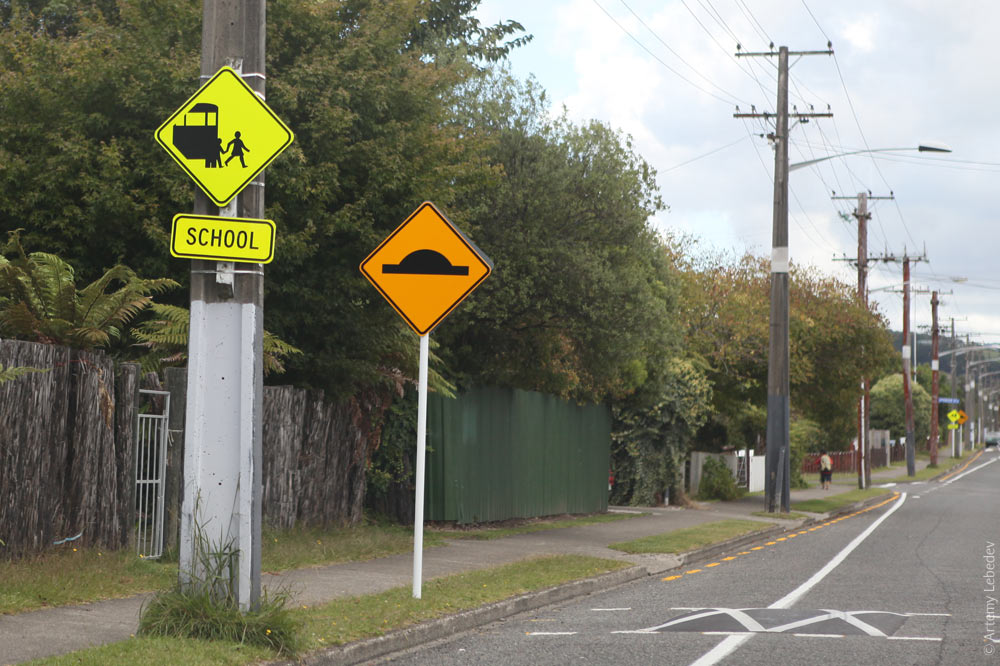 Concrete utility poles are the most common. They all have the same shape, like this: 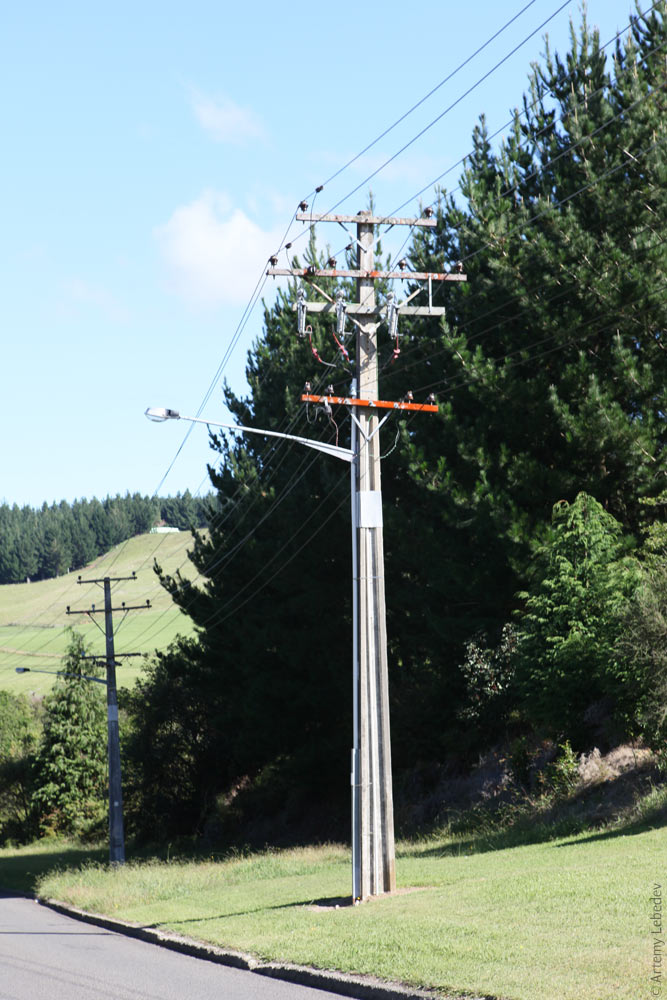 Wooden poles also exist, but they’re not as common as, say, in America. 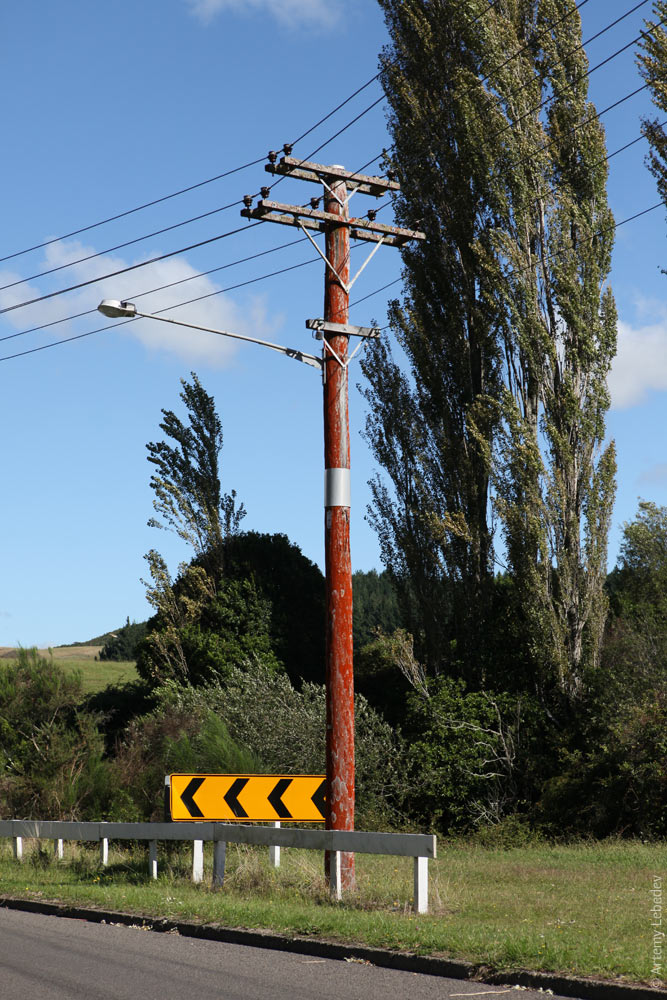 Every car has a sticker with the car make, model, and registration expiration date on the left of the windshield. 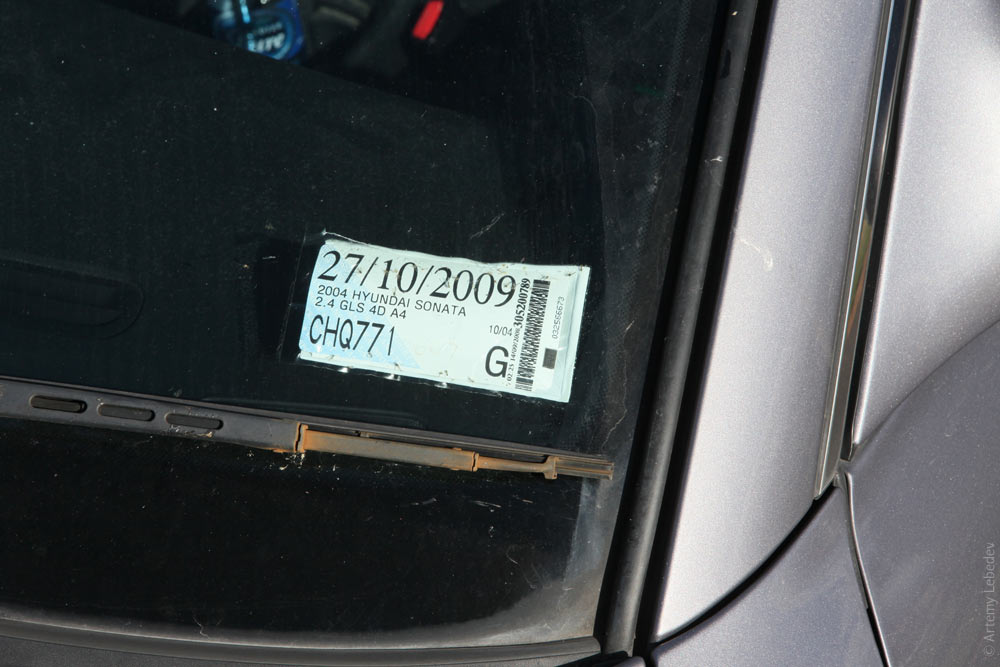 Yellow arrows pointing to fire hydrants often have a blue retroreflector installed in front of them. The contents of the manholes towards which the two white arrows point remain unknown. 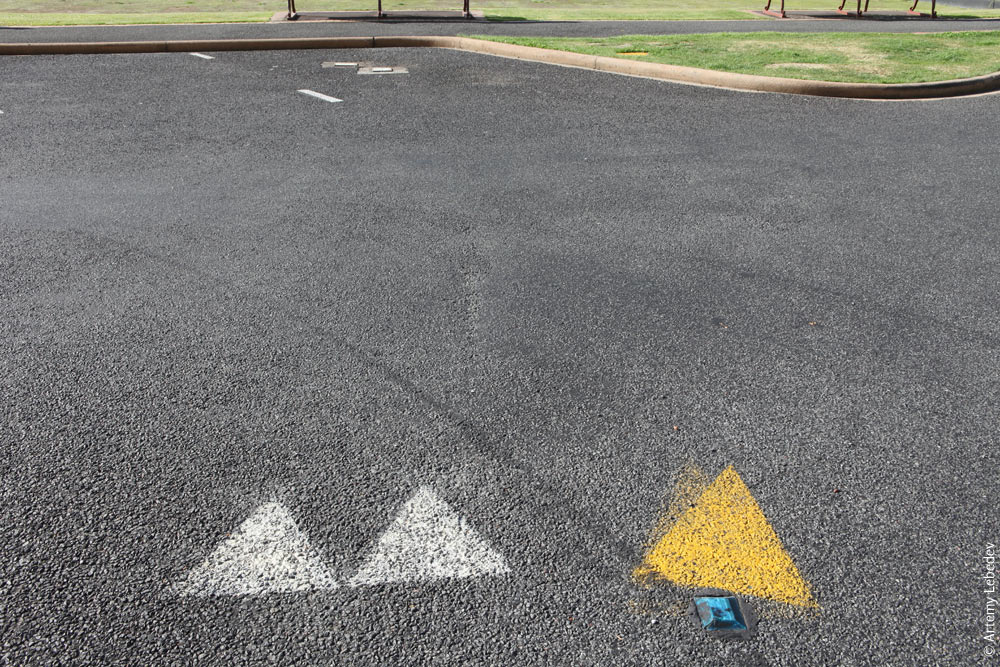 The lightning bolt on electrical boxes points upwards, like in Barcelona. 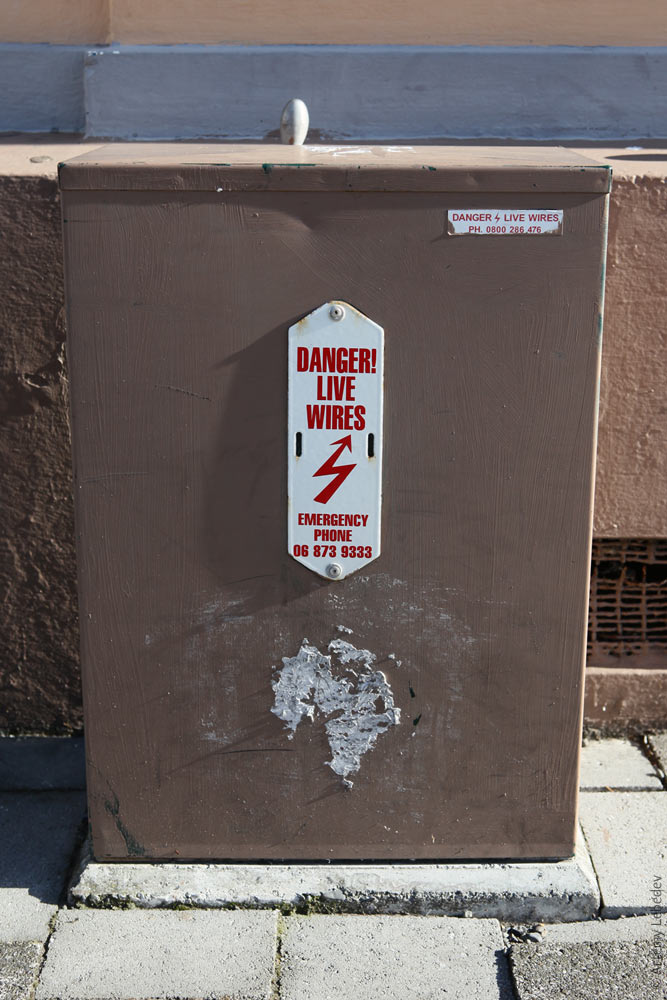 A magnificent poster urges drivers to stop and look at railway crossings. 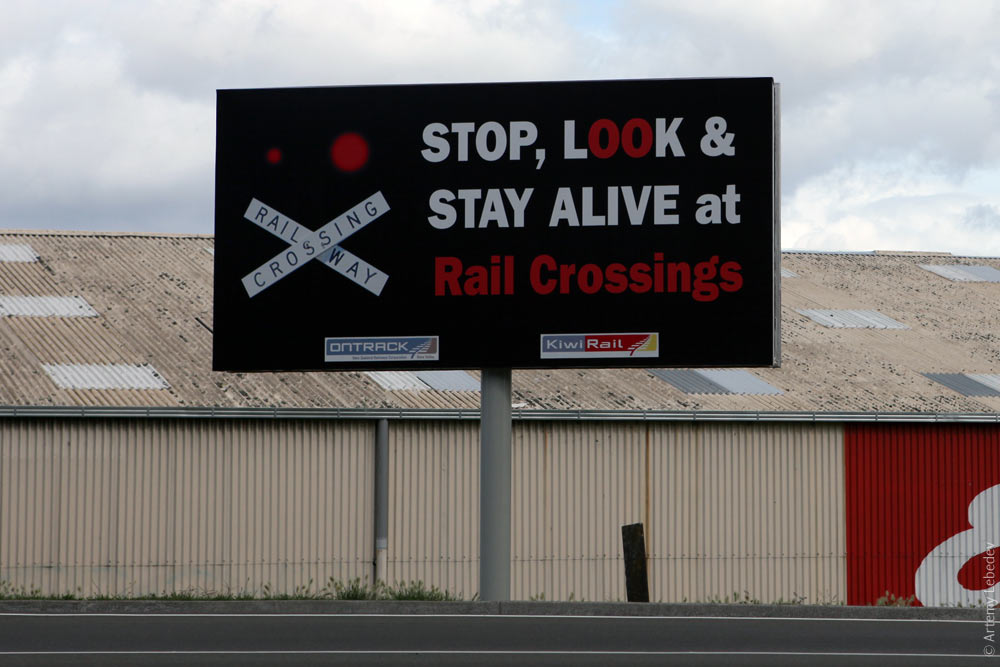 RotoruaMapThis might seem like a parody of a British red telephone box, but it’s not—you come across these constantly here. The main thing that differentiates it from the British version is that it can accommodate someone in a wheelchair—in other words, it’s very spacious. 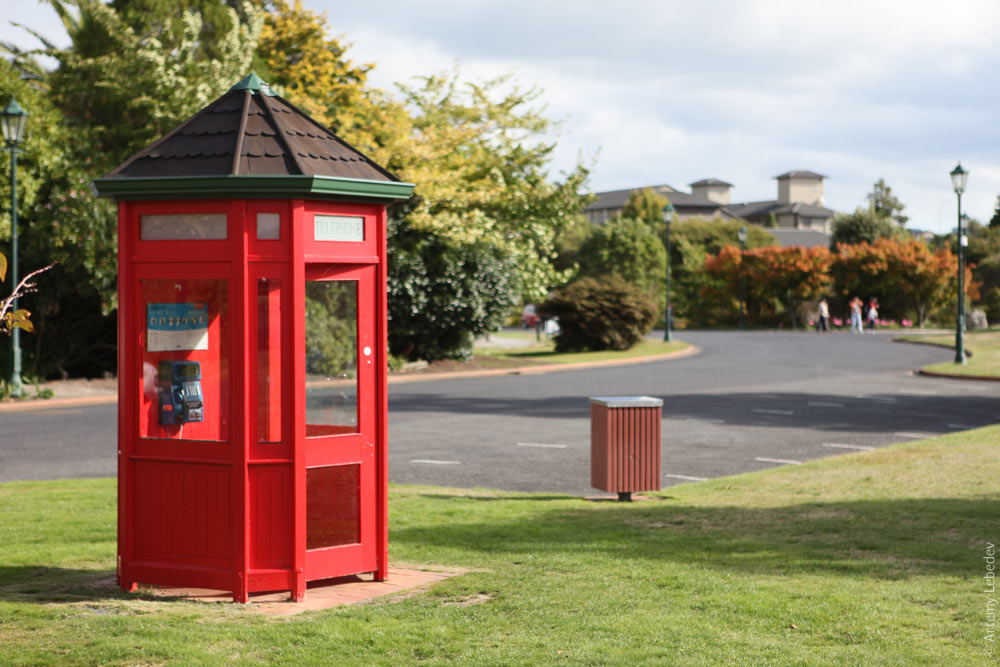 The entire downtown area was decorated for some kind of occasion with bicycles attached to the lampposts. Or maybe it’s always like this. 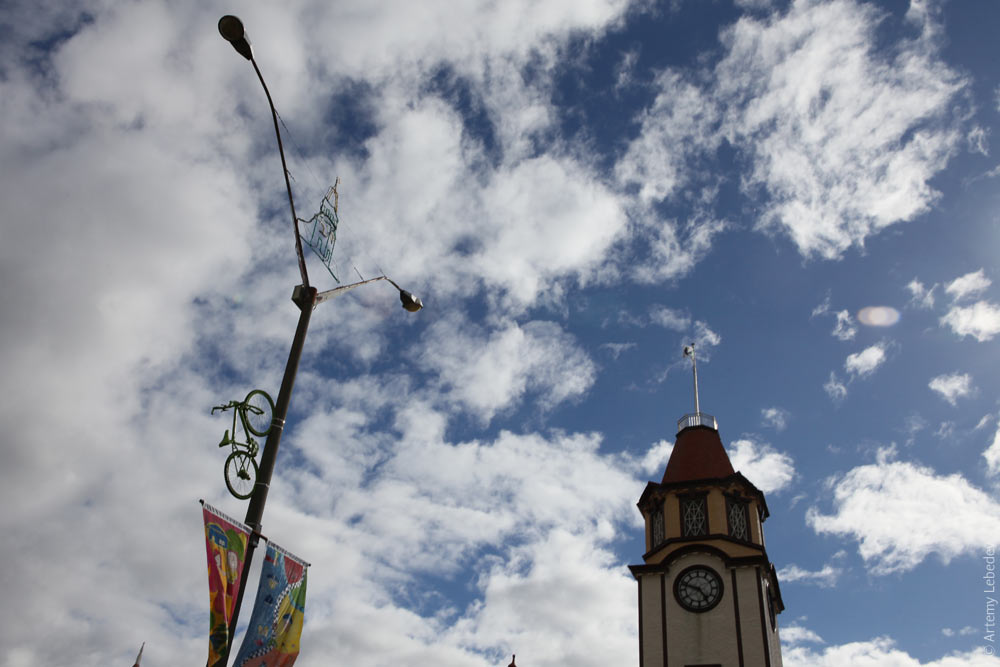 People come here to see the geysers and enjoy the abundance of geothermal amusements nearby. NapierMapNapier could have been just another ordinary city. With a trash can that can’t be thrown through a shop window in a moment of passion. 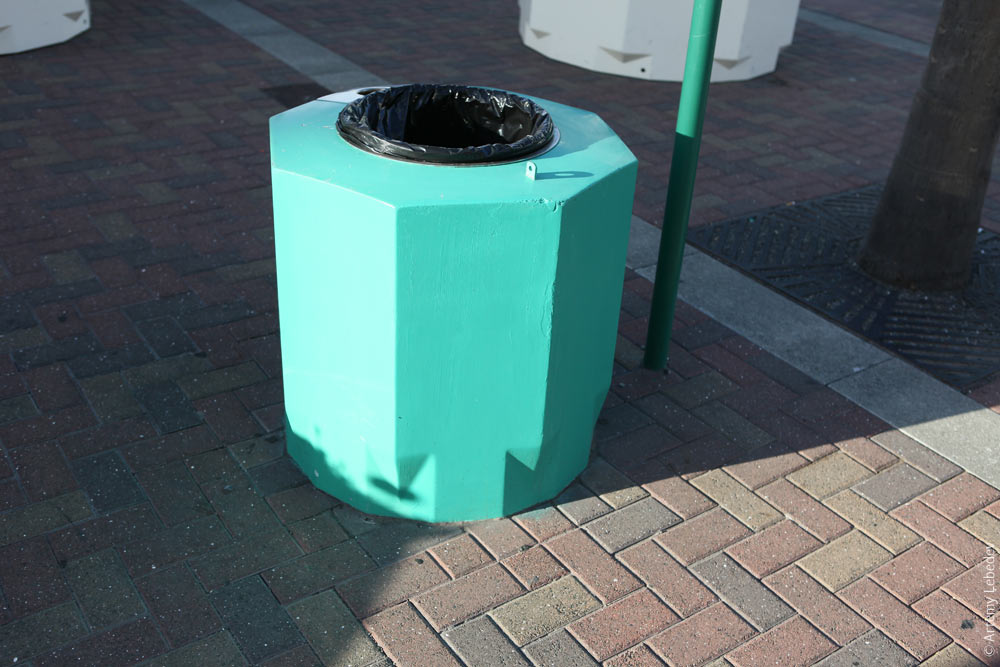 With one remaining non-working historic post box (very similar to the one in Colonia del Sacramento, Uruguay). 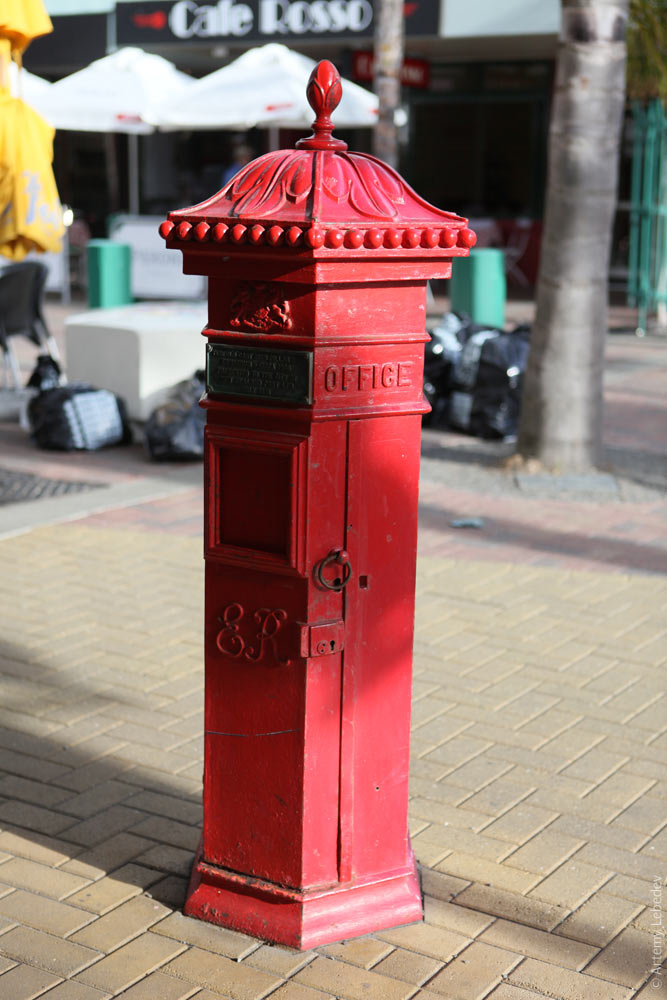 With its own unique manner of outlining fire hydrant hatches with thick yellow circles, in addition to the yellow arrows. 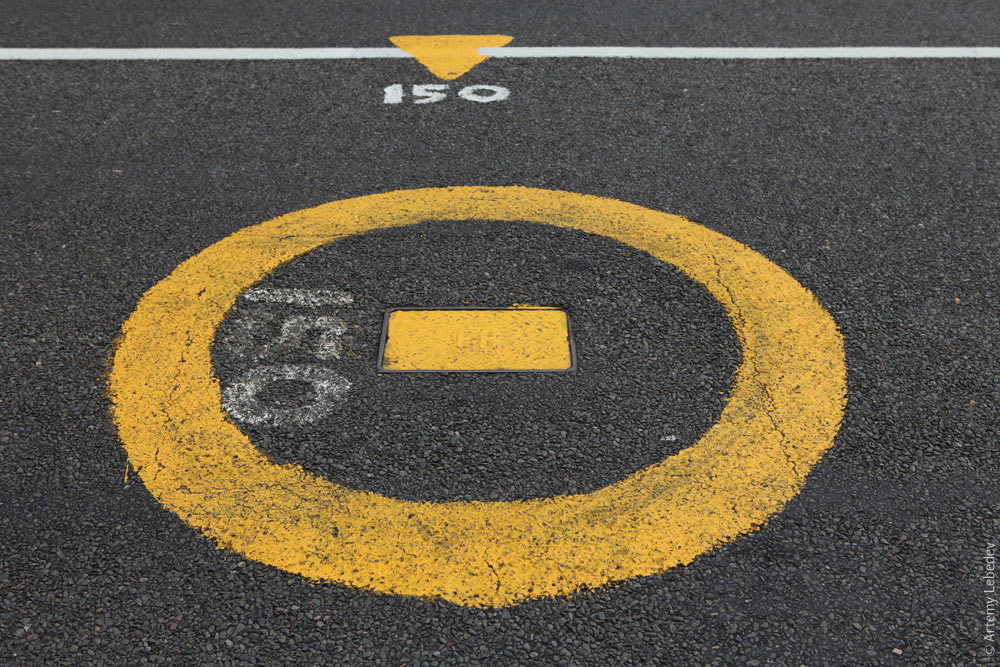 But Napier got incredibly lucky. In 1931, an earthquake destroyed half the city’s center. In place of the rubble, new buildings were erected in the American Art Deco style popular at the time. This is how Napier became the present-day world capital of Art Deco architecture. 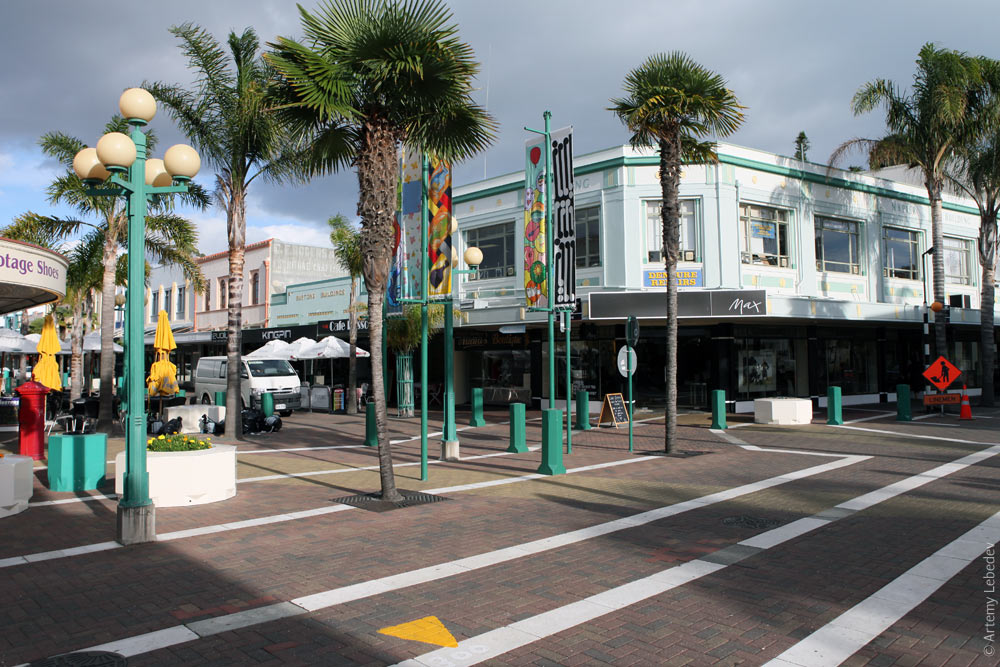 The small but cozy downtown area has become a museum dedicated to one style. A man emptying parking meters ended up in the picture. 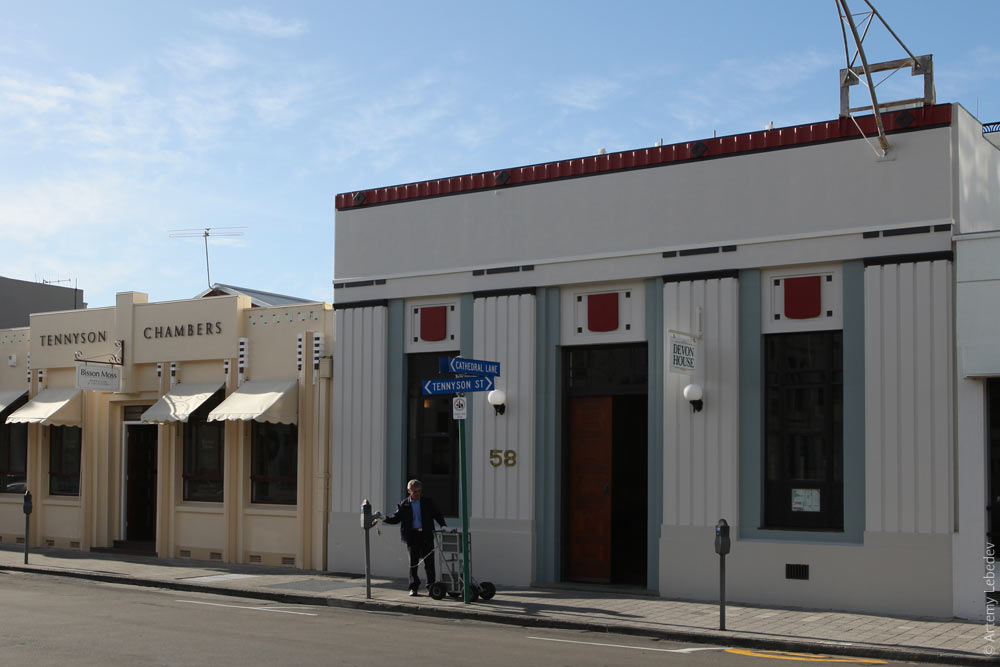 Various old inscriptions and names of no longer existing companies remain on most of the facades. But no one touches them. 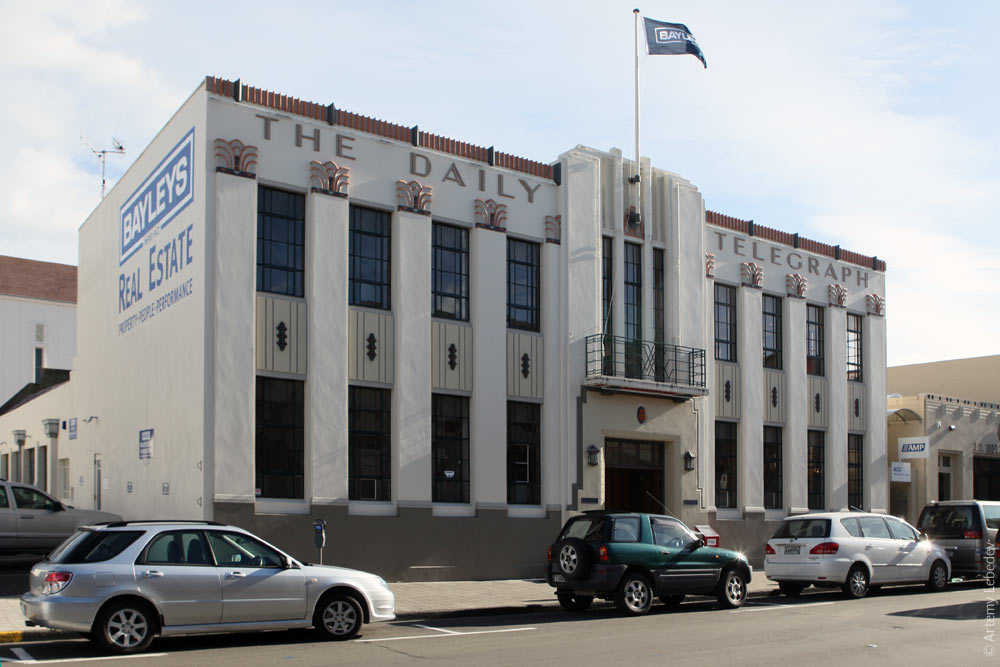 Instead of lampposts, special three-legged structures that sprout from the walls are used here.  Details that have long disappeared from other cities still survive here. For example, these charming fire escape ladders descending from the second floor to the top of the canopy over the sidewalk. 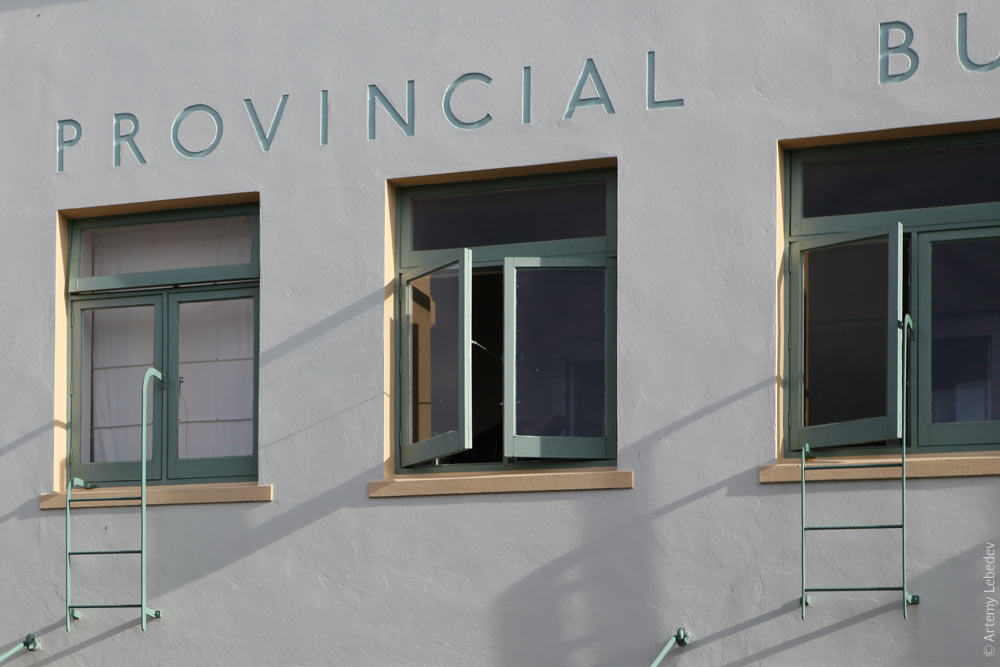 A red car pulls up to the tobacco company building. For a brief second, you feel as though you’ve gone back in time to a simple, romantic Art Deco past. 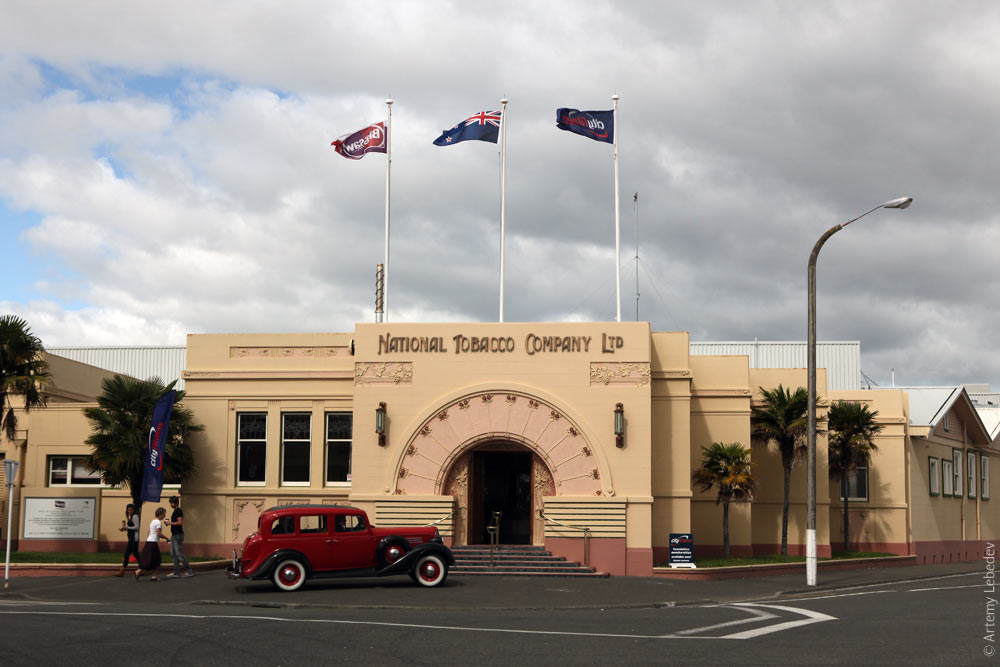 |